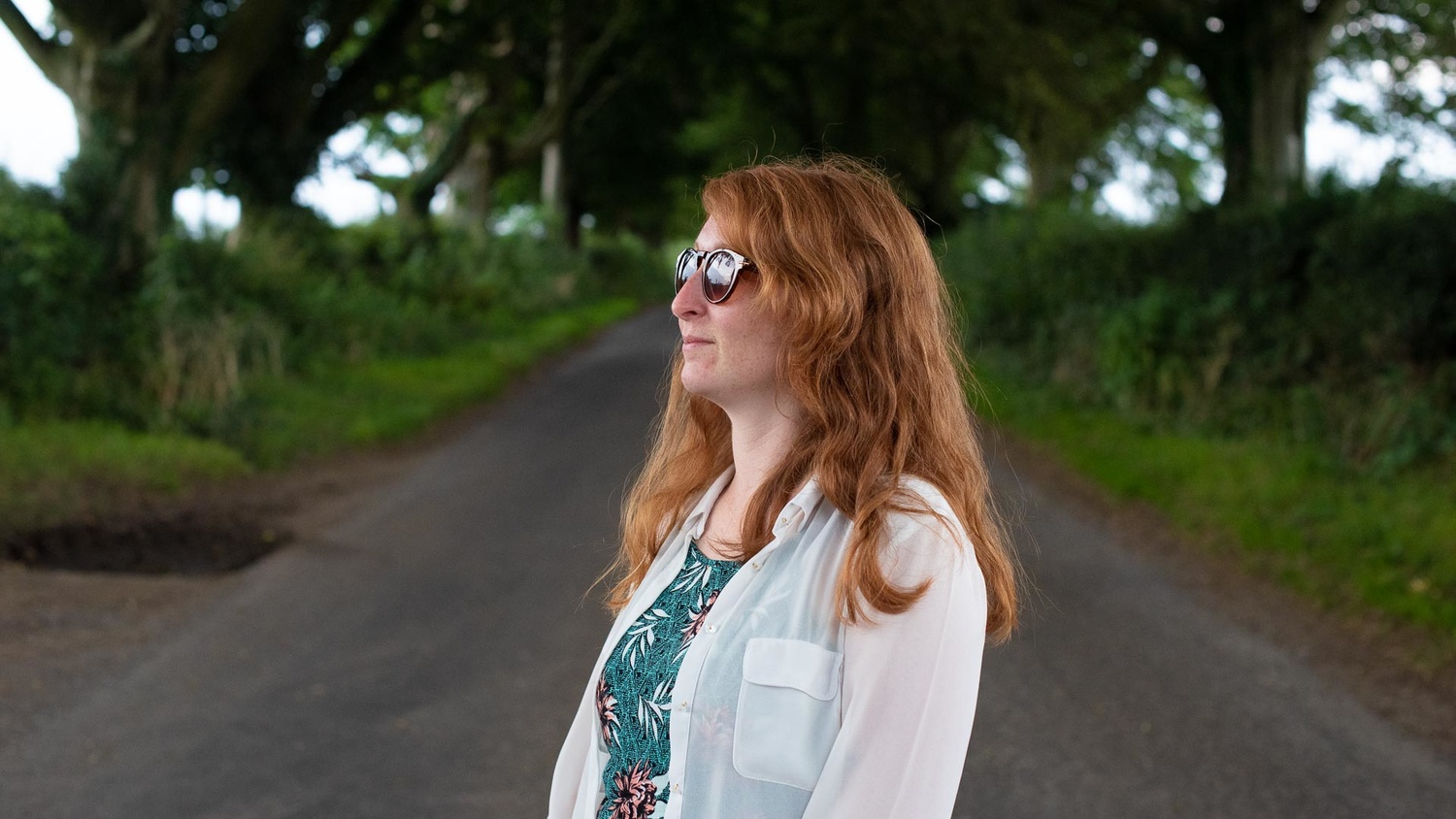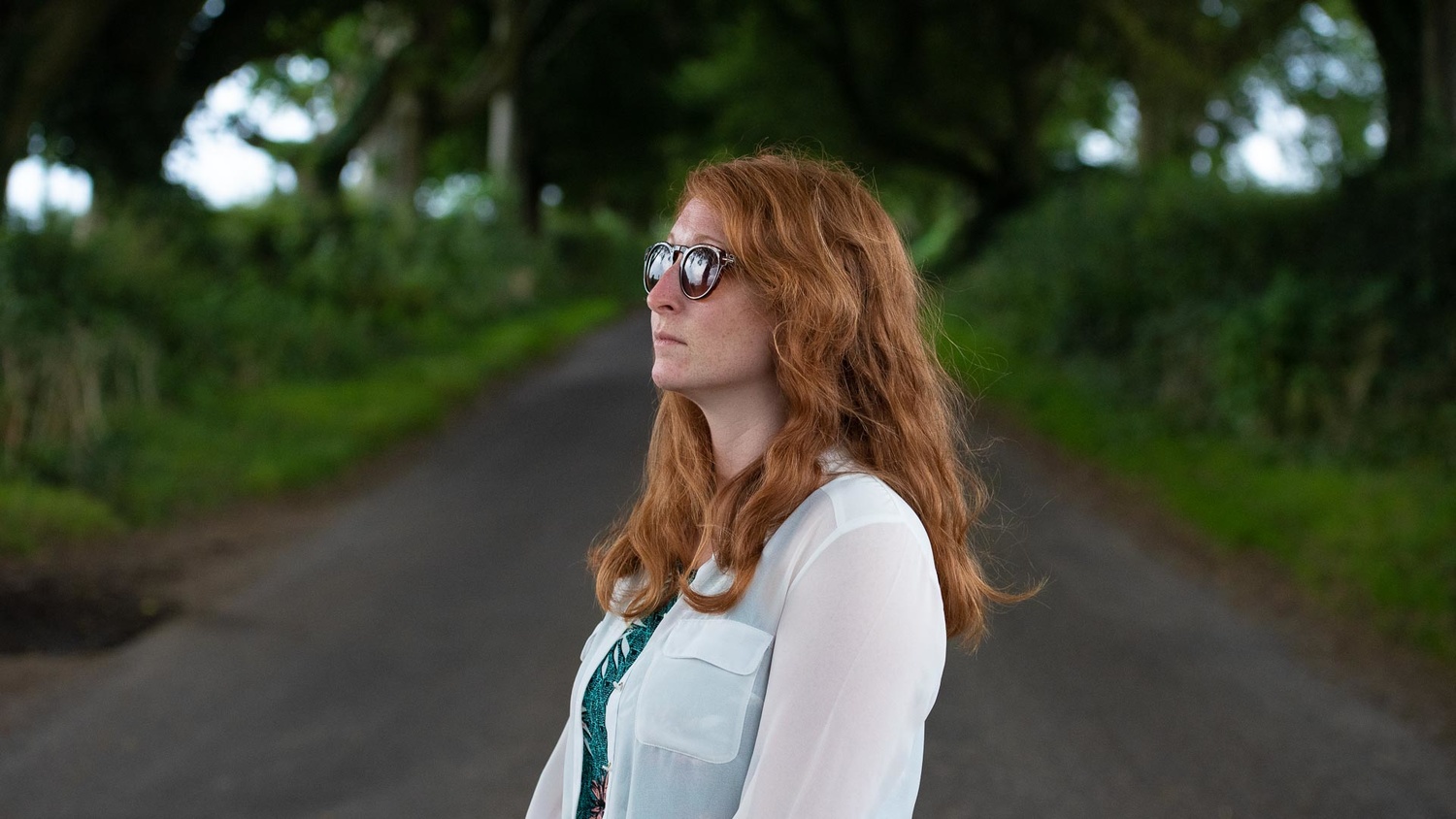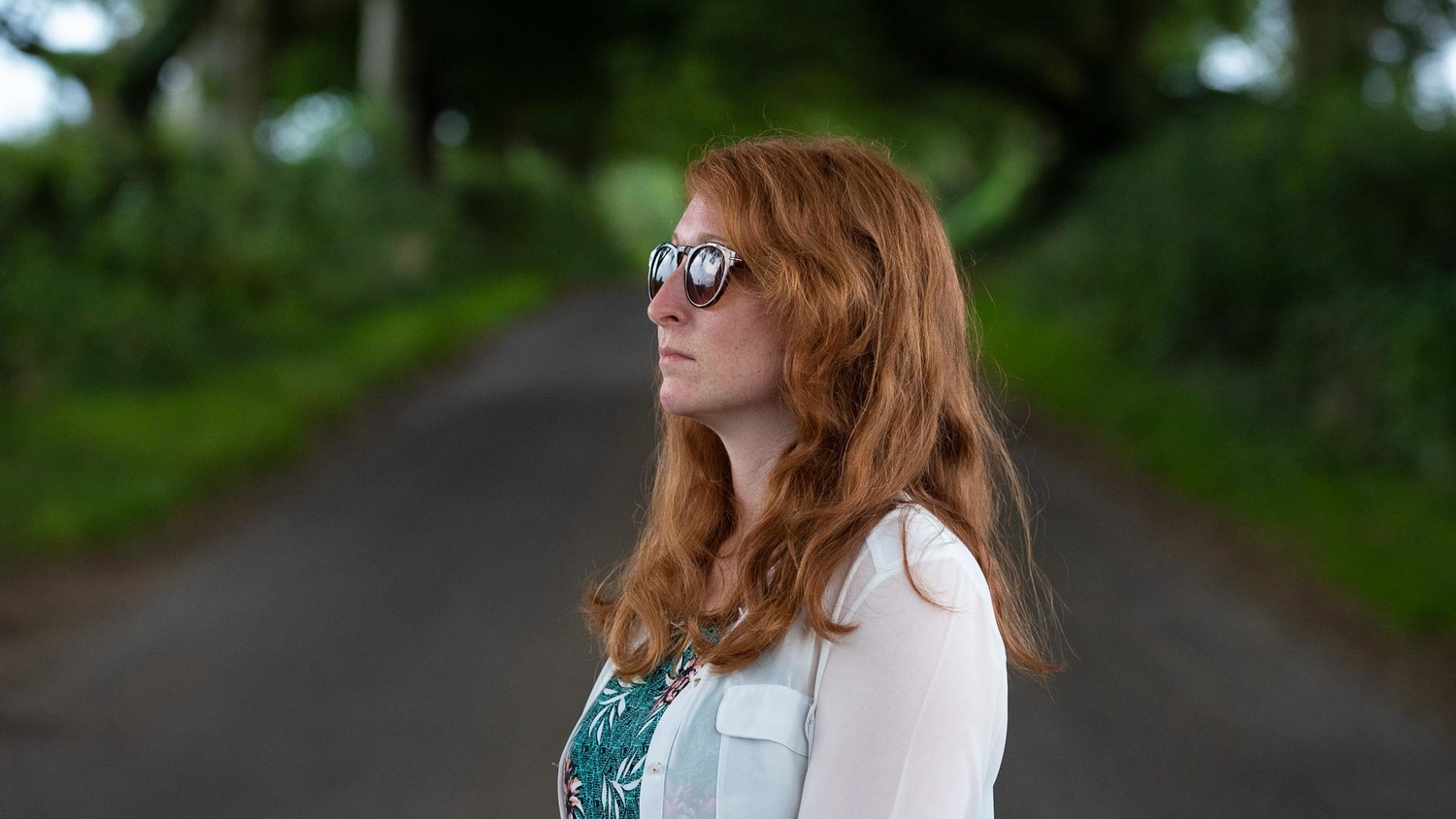Headshots should be simple, direct, and effective, with a clear view of the subject, but also a simple but professional backdrop. So, which focal length lens should you use, and how does it affect the final image?
I decided to test out a variety of lenses at different focal lengths for headshots, from 24mm right up to a ridiculous 1,200mm, to see how they impacted the shooting experience and the final photo. So, I captured shots of my subject outside and kept the same camera settings throughout, with aperture set to f/4, shutter speed at 1/500 sec, and ISO at 1,600.
There are a couple of cases where I used a teleconverter, which altered the aperture, and I'll signpost those when it comes up. But in an attempt to keep things as consistent as possible, I captured separate shots, trying to fill the same space in my frame of the subject at each focal length, and took shots at 24mm, 50mm, 70mm, 105mm, 200mm, 400mm, 600mm, and 1,200mm. There's a lot I learned doing this process, and hopefully, it'll help you decide on a focal length for your own headshots, too. Be sure to check out some more before/after comparisons at the bottom of the article.
1. 24mm

The headshot at 24mm includes a wide view of the environment surrounding the subject and is better for contextual work. EXIF: shot on a Nikon D750 with a Nikon AF NIKKOR 24mm f/2.8D lens, at f/4, 1/500 sec, and ISO1600
The wider the lens, the greater the depth of field we get in the photographs too, so if subject separation or soft, out-of-focus bokeh is what you want from your background, then you might want to look for a longer lens.
2. 50mm

The background as reduced in size compared to the 24mm, and the background is now going slightly out of focus. EXIF: shot on a Nikon D750 with a Nikon AF-S NIKKOR 50mm f/1.4G lens, at f/4, 1/500 sec, and ISO1600
3. 70mm

Heading into telephoto range at 70mm the background is perceptibly drawn towards the subject and less of the surrounding environment is visible. EXIF: shot on a Nikon D750 with a Nikon AF-S NIKKOR 70-200mm f/2.8G ED VR II, at f/4, 1/500 sec, and ISO1600
The 85mm prime lens is the quintessential portrait lens for most photographers, and when combined with a wide aperture of f/1.8 or so, can produce incredibly dreamy, out of focus backdrops that look fantastic.
4. 105mm

Patches of light in the background are now turned into little circles of bokeh and the facial features are noticeably flattened. EXIF: shot on a Nikon D750 with a Nikon AF-S NIKKOR 70-200mm f/2.8G ED VR II, at f/4, 1/500 sec, and ISO1600
Facial features are noticeably flattened, which can be quite flattering in a portrait. Macro lenses at this focal length (such as the Nikkor 105mm) can be great portrait lenses so long as they focus to infinity.
5. 200mm

At 200mm the backgrounds become fantastically out of focus but still provide enough detail to discern roughly what's behind the subject. EXIF: shot on a Nikon D750 with a Nikon AF-S NIKKOR 70-200mm f/2.8G ED VR II, at f/4, 1/500 sec, and ISO1600
6. 400mm

At 400mm it's becoming more difficult to handhold the headshot, but the subject separation from the background is phenomenal. EXIF: shot on a Nikon D750 with a Nikon AF-S NIKKOR 70-200mm f/2.8G ED VR II, and a Nikon AF-S Teleconverter TC-20E III, at f/5.6, 1/500 sec, and ISO1600
At this length, image stabilization is required to steady the frame during composition. In low-light conditions, handholding is now turning into a bad idea, unless you boost the ISO to 1,000 or more to keep the exposure balanced or have off-camera flash.
7. 600mm

The 600mm focal length is pleasing all round, complementing both the subject and background. EXIF: shot on a Nikon D750 with a Nikon AF-S NIKKOR 600mm f/4E FL ED VR, at f/4, 1/500 sec, and ISO1600
8. 1,200mm

The most extreme of all, 1200mm turns everything up to max, including the difficulty of shooting a portrait at this focal length handheld. EXIF: shot on a Nikon D750 with a Nikon AF-S NIKKOR 600mm f/4E FL ED VR Lens, and a Nikon AF-S Teleconverter TC-20E III, at f/8, 1/500 sec, and ISO1600
It’s impractical to take portraits at this focal length, but it looks like nothing else. Cinematic, and stylish, taking portraits on a lens this long is both insane and cool in equal measure. This would be great for those not able to position themselves right in front of the subject who instead have to shoot from afar. However, communication is difficult, and I practically had to shout as loud as I could to converse with the subject.
Below are some comparisons between focal lengths, with the wider example always on the left.
24mm Versus 70mm
50mm Versus 105mm
70mm Versus 200mm
400mm Versus 1,200mm
Overall, if I were to pick a focal length to capture headshots outside, it'd be between 200mm and 400mm, because it flattens the facial features, and enhances subject separation from the background. The backdrop is gorgeously out of focus but still contains a little detail to remain interesting. It's also relatively easy to communicate with the subject as you're not too far away, and the settings don't have to become too extreme to maintain a fast enough exposure to keep things sharp, especially if aided by image stabilization. However, if shooting inside with limited space, I'd probably opt for 70mm if shooting on a f/2.8 zoom or 85mm at f/1.8 to maintain that shallow depth of field.







The first few can potentially tell a story. The rest look like floating heads pasted on top of a blob. If the aim is to eliminate all distractions for a work-appropriate headshot, then a studio is better suited. Otherwise, pick a nice environment for the given image, include it in the image with just enough softness to separate the subject from the background.
Here is my hot take after archiving thousands of family photos during this pandemic. People don't react well to portraits with no background, however, when it shows the campsite we went to in 1980, my late uncle's farm, the river where we used to play in, all of these things bring back strong memories and emotions. The ones where the bokeh is too strong are quickly skipped or some try guessing the location with quasi interest. I'm going a bit off-topic here, but what I'm trying to emphasize is photography is about preserving memories or trying to get great shots through composition. This bokeh fascination is going to hurt us working pros because phones can now mimic this and after years of using bokeh as a crutch, laymen now think that this is what pro photography looks like, what now?
"pasted on top of a blob", haha, great. I occasionally do kindergarten portraits and this is the thing. If I use the 85mm I am far to close to the kids and all they see is this big black camera and this older guy hiding behind it. That simply does not work. So I use the 70-200mm f/2.8 at around 130-170mm to get far enough away with f/4-4.5. To not just have a torso "pasted on top of a blob", I move kindergarten things close behind the kids just enough out of focus to not distract but enough in focus to be recognized.
Of course you are right, a studio is better suited but some times there are sessions to be done on site.
Thanks Jason, for another one of those experiments. I'd wonder now, how each lens would compete wide open, beginning with 35mm f/2, 50mm f/1.4 (or f/1.8), 85mm f/1.8, 105mm f/2.5, 200mm f/2.8, (400mm f/4 .... we have seen). I miss a little the 35mm above. I think it is suited well for portraiture.
J. W. I registered just to put an upvote on your comment. I shot portraits for magazines for a few years and aside from very specific situations, I don't think anything above 135mm would make sense. And the conclusion also leads people more into pointless extreme isolation, possibly more expensive gear and definitely more complicated to use. Even if we could agreed that it can make facial features more flattering, that's one pro vs many cons, so for sure it's not the best focal length.
Same here. Had to register to upvote the comment. We need to revisit our old family photographs to understand what photography is all about.
.
Jeez oh!!
.
He forgot 35mm and it will haunt him forever
I think this exercise would have been more compelling with an actual head shot instead of being in profile. And, without sunglasses.
The other lenses were crippled, in terms of background separation, by not using their wider apertures.
Cool post! Great demonstration of compression, too.
I would suggest 50-70 range is good, that’s what I choose. I try to keep 2 meter distance to keep face looking normal. But most photo of faces are shot on much closer distance. I don’t see shooting with a 80-200 on the long end as preferable idea, unless you think the person will look better like that. Most selfies have a distinct wide angle look, that’s how people think they look.
There was some research done on this, concluding you should stay at least 1.5 meter away from face, to not distort.
Nice series and many thanks for not doing a video.
Impressive to observe the background compression: the little bright spot behind the head at 70mm, hidden when using shorter focal length, turns into that large bright blop at 400mm and dissolves into that washed out brightness on longer lenses. It highlights that we need to think about the purpose of the portrait in order to have the suitable background.
It would be a much better comparison, IMO, if you had shot straight-on, and had her ears showing.
Back in the day when 35mm film ruled - the 105 was always known as the portrait lens. Just saying.
I love 105 for the (very) rare occasions I shoot a portrait. The only reason I still keep my Sigma macro...
When I used to own a Nikon film camera, I had a Nikkor 105 f2.5, one of their best, sharpest lenses way back in the 20th century.
You missed 35mm. Imo my favorite outdoor headshot always been 200mm f4 with some exceptions on f2.8.
In general i know people love 85mm for headshots but i prefer 105-200mm usually on f4 ( you still have awesome bokeh plus sharpness of f4 ( sweet spot on my g2 Tamron 70-200 is 135mm f4-5 ).
A thought occurs. I know that crop sensor "changes" the focal length in terms of field of view, but does it also affect lens compression? i.e., will a 50mm on a crop sensor have the same field of view AND lens compression as an 85mm on a FF camera?
"compression" is not about focal length but about the distance from the subject in comparison to subject distance from the background. For example, if you are shooting someone from 10m using both a 35mm and a 70mm the "compression" is the same. Cropping the 35mm to match the framing to the 70mm will match the compression.
The optical illusion that telephotos have a is because doing a full-body portrait with a telephoto requires more distance, thus creating the compression effect. But if the 35mm shoot was taken with a Sony A7RIV and the 70mm on the A7SIII, no one would be able to tell the difference between the two after cropping the 35mm.
If you stand at the same distance to the subject, yes.
thank you
200 to 400mm? Really, that should not be called headshot. The ability to communicate with your subject is very poor at this distance. Even at 105 it starts to become a bit far to get a good expression on your subject. Also, you don't need 400mm to separate your subject from the background, you can create similar effects with an 85mm at 1.8 or 2.
Should have stopped at 200mm. You don't say how far away you were from the subject at 1200mm but I imagine you'd have to send a telegram to let her know you were finished.
Good article. Another title could have been "Best Distance to Stand for Headshots", because as we know, it's the distance to the subject that determines compression/bokeh, and NOT the focal length (thanks Lee Morris for teaching me that). We just use focal length for framing.
With our current crop of higher-megapixel cameras, it's possible to use, say, a sharp 35mm lens and crop to get the same field-of-view (and compression/bokeh) of a 50/85/105, etc.
I'd like to see a test using a 35mm lens, and then crop to 50/85/105 or even higher, and then try to tell the difference vs actually using lenses of those focal lengths.
Certainly for the web and Instagram, the vast majority of the audience might not EVER notice. And even for prints, there's quite a bit of cropping we could do for 5x7's, 8x10's, and perhaps larger.
Anyway it would be interesting to get a feel for just what the limits would be for a given megapixel sensor:
1) Where even a keen eye could not see a difference, and
2) Where an average member of the internet/Instagram audience could see a difference.
And then on top of all that, remembering that if the content is good...if the subject/light/composition is good...almost NO ONE would care AT ALL.
I'll save you some reading time. The best lens is the one that gives you the look you want.
The focal length comparisons via the sliders were useful to me. Thanks.
Asked my 10 year old and she picked the 400mm.
Jason
This is one of the most useful and informative article I have ever come across in any publication in 4 decades. You have my gratitude. All other aspiring authors please. Take note of examples and style.
Thanks
If you are interested in producing great results looking at photographer's websites can stimulate your creative abilities. Sites that exhibit phenomenal photography beg the question "How was that accomplished? How was that done?" Some people can perform astounding feats with a camera. When you look at what they did and then try to match it you develop your understanding of all aspects of the skill. Composition, light, exposure and lens selection; they just are names scratching the surface since we all use essentially the same things but the products are dramatically different.
Want to see what I mean? I found this guy yesterday:
https://www.all-about-photo.com/photographers/photographer/1177/pedro-lu...
self taught...
The author is confusing depth of field with blurry background (bokeh). If your subject fills the frame with a 50mm lens and then with a 500mm lens, the subject is 10 times farther away with the 500mm lens. The depth of field is the same for these two cases but the background blur is different. Try it yourself, or use any of the on line depth of field calculators.
The perspective of a subject's face is a function of how close the camera is, basically independent of focal length. At the same distance, the perspective of a face will be the same for 50mm as 500mm. Try it. The reason for using longer focal lengths for portraits is two fold: first the camera is farther away and less intimidating, and second, the perspective looks more pleasing. Look at yourself in the mirror, start up close and gradually more farther away and you will see the difference in perspective. At about two feet from the mirror, or about four feet total distance things will start to look natural. The human eye is roughly 50mm focal length. Your 50mm lens at 4 feet provides a pleasing perspective but this is way to close for comfort. So go to 100mm at 8 feet for a pleasing perspective at good standoff distance. That is why 100mm is often noted as a good portrait lens.
Your premise is "Headshots should be simple, direct, and effective, with a clear view of the subject, but also a simple but professional backdrop." Then you use a shaded tree lined roadway? Your descriptions of the background detail are pretty off as well. And who would use a huge telephoto to shoot a headshot without a tripod? In fact any headshot without a tripod? The camera is a tool and giving a person a hammer & saw does not make them a carpenter. As to JW's remark about "laymen" thinking they have now mastered professional results, I would not worry. The product always speaks for itself.